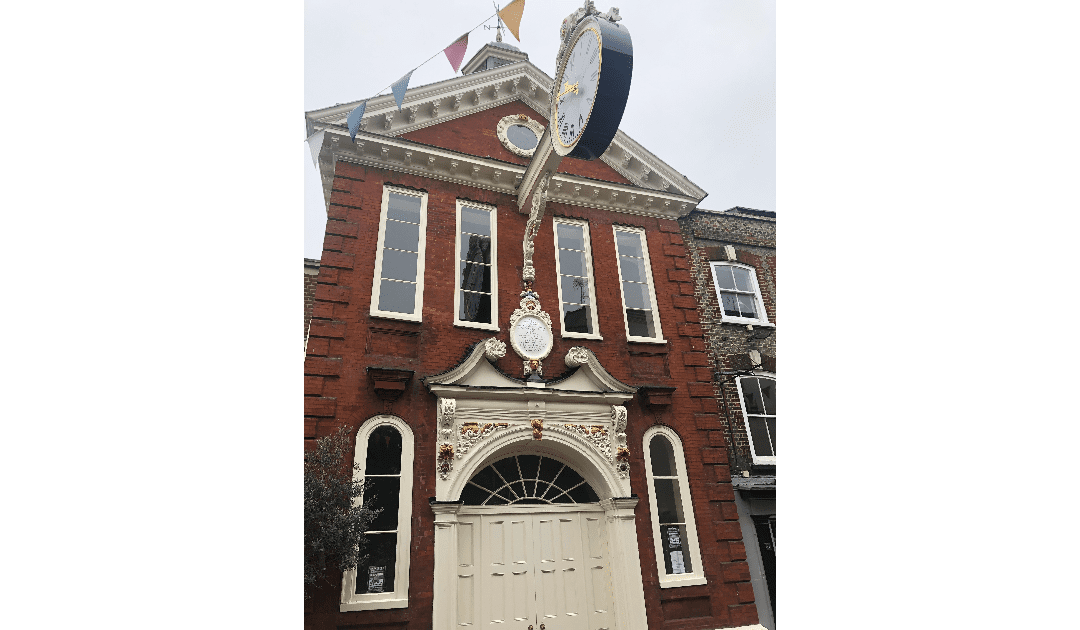The photograph was taken at latitude 51.39 degrees north and longitude 0.50 degrees east. It’s of the guildhall in Rochester, only twenty-four miles from the Royal Observatory Greenwich, which explains its low longitude. The prime meridian runs through Greenwich.
The plaque on the wall states that the guildhall building was built entirely at the expense of Sir Cloudesley Shovell, and that he represented Rochester as member of parliament in three parliaments. He also has a role in the longitude story. He was admiral of the fleet on his flagship HMS Association returning from the attack on Toulon when they sailed onto rocks around the Isles of Scilly. That was on 22nd October 1707. Five ships and two thousand men, including Shovell died that night. Parliament was galvanised into action and the Longitude Act was passed in 1714. This offered a monetary prize for a simple and precise method for precisely determining a ship’s longitude at sea.
The sextant and its predecessor the octant are marvellous instruments. They precisely measure the angle between two points. If you use your sextant, or octant, to measure the angle between two points on the shore, a lighthouse and church spire for example, then with the distance between those points, as measured off your nautical chart, and some simple trigonometry, you can calculate your distance from the shore. If you measure the angle between the sun and the horizon at local noon, when the sun is at it’s highest, it is a simple matter to calculate your latitude. The problem with longitude is that you need to know what time it is quite precisely. A one minute error equates to approximately seventeen miles. John Harrison eventually won parliament’s prize for his marine chronometer.
Sir Anthony Standen made several voyages through the western approaches to the English Channel over a hundred years before Sir Cloudesley Shovell. I’m thinking of when he accompanied Robert Devereux, Earl of Essex, on his expeditions to Ireland, Cadiz, and the Azores. If he had suffered the same fate, from an inability to determine longitude, my Sir Anthony Standen Adventures would not have got beyond book one, The Spy who Sank the Armada.

